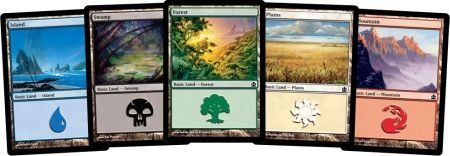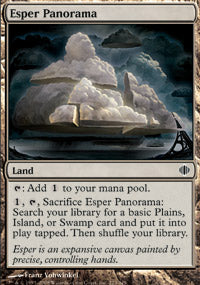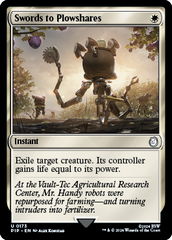Magic: The Gathering - What is a Spell?
Posted by Andy Lawrence on
This might seem like a strange thing to talk about in a game called Magic: The Gathering, but a Spell is a specific thing at a specific time in the game, and not just any card at any time. I’ll explain more below.
We are going to be using the words Card (the physical thing you’re holding or that you put down on the table) and Spell (the card as its played into the game) as well as The Stack (an imaginary pile of spells that tells us what order we resolve things in) a lot in this article, so I'll try to be as clear as I can.
What Counts as a spell?
A Spell is a card that’s on the stack. It’s a simple as that. The term spell does not apply to anything else. If a card is in your hand, it is not a spell, If a card never hits the stack (like a Land) or has resolved, like a creature or Enchantment that is in play, it’s no longer a spell.
Effectively when you Cast a Card (this used to be referred to as playing a card) it becomes a spell until it resolves.
There are a few items that hit the stack when used, things like a creature ability that needs to be tapped to activate, but these are not counted as spells as they are from permanents that are already in play.
To be classed as a spell you must either play a physical card from your hand on to the stack or make a copy of a card (which as an action mimic putting a physical card into play from your hand)
Having said that lets look at the different card types and see how they interact with the “spell” rule.
Instants… are they Spells?

This is the easiest one to talk about as Instants are not Permanents so when they have been resolved they are put straight into the graveyard.
Having said that they are still only counted as spells when they are on the stack. From the time they are played from your hand until the time they resolve they are Spells. The moment they resolve, and their effect happens, they are no longer classed as Spells.
Sorceries… are they Spells?

Much the same as Instants, Sorcery cards are only classed as spells when they are cast from your hand and are on the stack and only until they resolved.
Creatures… are they Spells?

When you cast a creature card, and while they remain on the stack Creatures count as spells. Once they resolve and enter the battlefield, they become permanents instead of spells.


This definition is important because it effects the way counterspells work. For example, Remove Soul Counters a target Creature Spell. Which must be played before the creature card resolves and becomes a permanent. Doom Blade however destroys a target non-black creature, and therefore can not be used to counter a creature spell. The creature Card must resolve and leave the stack and become a permanent before you can use Doom Blade on it, and of course in this particular case it must be a non-black creature as well!
Planeswalkers… are they Spells?

Like the other card types already mentioned Planeswalkers are a Spell while they are on the stack. The Card becomes a Spell when you cast it, and becomes a permanent when it resolves, and enters the battlefield. Using the loyalty ability of a Planeswalker doesn't count as casting a spell.
Lands… are they Spells?


Nope. Lands never go on the stack, so they are never classed as Spells. Doesn’t matter if they are Basic Lands or Non basic Named lands. When you play a land, it immediately enters play and is placed on the battlefield.
Permanents… are they Spells?
Again, just like the other card types when cast and put on the stack they are spells, when they resolve they just become permanents. This means that if something is in play as a permanent it is not a spell.
Let’s clear up a few of the terms used in this article Card, Permanent and Spell.
The definition of these things in the game of Magic: The Gathering are as follows.
Card
A physical thing that you handle. Your hand, Library and Graveyard are comprised of cards. Anything you can stick in a sleeve and put in your deck, it’s considered a Card.
Because of this Tokens are not considered to be cards for this definition in the game, although they are obviously cards in a real-world sense of the word.
Permanent
This is slightly more complicated than it first seems, but its fairly easy to understand.
Any object on the battlefield including cards and tokens are considered to be Permanents. Permanents that are not on the battlefield are either Permanent Cards or Permanent Spells (the terms are interchangeable). This distinction is important because some cards will refer to Permanents or Permanents on the battlefield.
Spell
Spells are objects that are put on the stack from a particular game zone. Nine times out of ten this will be your hand, but other effects like copying spells or spells that move things from other zones can put items on the stack, where they become Spells until they are resolved.
Don’t forget that not all things that go on the stack are physical cards, as copies of cards, and some abilities and effects do as well and do as well but only Cards count as Spells.
They have the affix of whatever type of card they are, for example an instant when on the stack is an “Instant Spell” or a creature is a “Creature Spell” while on the stack. This is important for things that effect cards in particular states, like counter spells, destroy effects and the like.
Resolving Spells, how does that work?
Spells resolve when they are on the top of the stack, and each player passes Priority. When a Spell is “Cast” each player gets a chance to respond to it before it resolves. This happens in Turn order.
A Spell resolves when everyone declines to take an action. If another player casts a Spell or activates an ability that goes on the stack on top of your Spell (stacking on top of each other -yes, that’s why it’s called the stack) this then triggers another round of responses, and the process continues with spells and effects stacking up until all players decline to take an action.
Once all players decline to take an action the stack resolves in reverse order, so the last thing to be added to the stack resolves first all the way down to the first thing that was put on to the stack.
For example, a creature card is put into play and enters the stack, then a counterspell card is played as an action, so this lays on top of the creature card on the stack. Both players then decline to take an action. The Counterspell is on top of the stack and resolves before the creature card can, and therefore counters the creature card, removing it from the stack. The poor creature is gone before it even got to the battlefield.
Spells, Abilities and Effects.
When you get down to brass tacks the real difference between these things, are that Spells are cast and Abilities and Effects are triggered.
Abilities are not Spells and Spells are not Abilities, even if they are placed on the stack to resolve.
An Effect is the result of a Spell or Ability.

For example, Swords to Plowshares is the Spell, and Exiling a target creature and its controller gaining life equal to its power, is the Effect.
Hopefully that helps to clear up what is a Spell and what isn’t a Spell, and will help to make your games of Magic: the Gathering run a little smoother.
See you on the Flipside
Andy @ GGP
